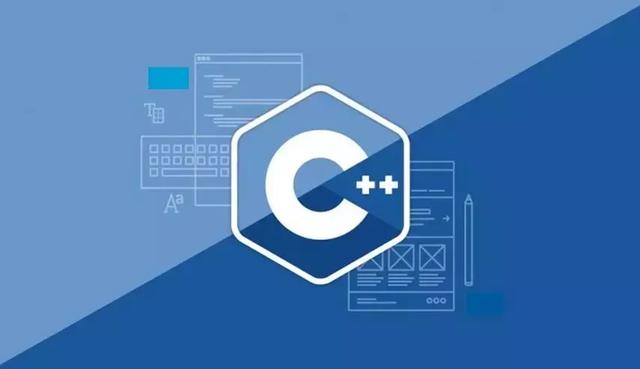Template
function template
函数模板就是建立一个通用的函数,其函数类型和形参类型不具体指定,用一个虚拟的类型来代表。这个通用函数就称为函数模板。
template< typename T >(class和typename都行)
1
2
3
4
| 参数类型自动推导
Max(x,y);
显示类型调用
Max<int>(x,y);
|
template function
调用函数模板,编译器私底下会 根据传过来的变量创建对应的函数,将它具体化。——这就是通过编译生成的模板函数。
小结:
- 我们注意到,函数模板和函数重载似乎很类似,当他们两个并存时,如果参数类型和普通函数更匹配,就调用普通函数。
- 不存在普通函数,函数模板会隐式类型转换吗?不会。不提供隐式的类型转换,必须是严格的匹配。
- 如果显式的调用函数模板,则使用<>类型列表。
- 如果函数模板会产生更好的匹配,使用函数模板。
- 当所传参数需要隐式类型转换时,优先调用普通函数。
- 函数模板也可以重载。
- 编译器并不是把函数模板处理成能够处理任意类型的函数。
- 编译器从函数模板通过具体的参数类型产生不用的函数。
class template
类模板创建对象,必须显式指定类型。
类模板用于实现类所需数据的类型参数化。
类模板在表示支持多种数据结构显得特别重要,这些数据结构的表示和算法不受所包含的元素类型的影响。
类模板与继承:
1.父类是一般类,子类时模板类,和普通继承类似。
2.子类是一般类,父类是模板类, 继承时必须在子类中实例化父类参数。
例如:
1
2
3
4
5
6
7
8
9
10
11
12
13
14
15
16
17
18
19
20
21
22
23
24
25
26
27
28
29
30
31
| template <typename T>
class A
{
public:
A(T t = 0) :t(t)
{
}
~A()
{
}
T getT()const
{
return this->t;
}
private:
T t;
};
class B:public A<int>
{
public:
B(int b = 0) :A<int>(b)
{
}
private:
int b;
};
|
3.父类和子类都是模板时,子类的虚拟类型可以传递到父类中。
类模板的写法注意:
- 写在类外面时,要加参数列表, 并且要声明模板(class name< 参数列表 >)
- 类模板定义和声明分开写,包含主函数的.cpp 要包含”该类声明的.cpp”
书写实例:
(就是基本上只要在类外写定义的有类名的位置后面都要写上< T >,除了构造析构函数,其实写上也没事,只是警告让用新的书写形式。)
(不建议使用太多的友元函数)
类模板和友元函数:
在类外实现成员函数要先声明一下模板
1
2
3
4
5
6
7
8
9
10
11
12
13
14
15
16
17
18
19
20
21
22
23
24
25
26
27
28
29
30
31
32
33
34
35
36
37
38
39
40
41
42
43
44
45
46
47
48
49
50
51
52
53
54
55
56
57
58
59
60
61
62
63
64
65
66
67
68
| #include<iostream>
using namespace std;
template<typename T>
class A
{
public:
A(T a= 0);
T& getT()const;
A operator+(const A& other);
void print()const;
~A();
template<typename T>
friend A<T> addA(const A<T>& a, const A<T>& b);
private:
T t;
};
template<typename T>
A<T>::A(T a) : t(a)
{
}
template<typename T>
A<T>::~A()
{
}
template<typename T>
A<T> A<T>::operator+(const A<T>& other)
{
A<T> tmp;
tmp.t = this->t + other.t;
return tmp;
}
template<typename T>
void A<T>::print()const
{
cout << this->t << endl;
}
template<typename T>
T& A<T>::getT()const
{
return this->t;
}
template<typename T>
A<T> addA(const A<T>& a, const A<T>& b)
{
A<T> temp;
temp.t = a.t + b.t;
return temp;
}
int main(void)
{
A<int> a(100);
a.print();
A<int> b(200);
A<int>temp = addA<int>(a,b);
temp.print();
return 0;
}
|
小结:
- 类模板内部声明友元函数,也要声明一下模板先。
- 类模板成员函数内部从创建的对象别忘了加< T >。
- 友元函数调用,函数名后也要显示指定类型。
类模板和static数据成员
类外赋初值
1
2
| template<typename T>
int A<T>::count = 666;
|
虚拟类型T被实例化的类型不同,所调用的内容也不同。
注意以下代码的静态变量变化即可了解。
同意类模板的虚拟类型T被实例化的类型相同,静态变量是同一个。
1
2
3
4
5
6
7
8
9
10
| A<int>a(100);
A<int>b(200);
a.count = 888;
cout << a.count << endl;
cout << b.count << endl;
A<float>c(1.0);
A<float>d(2.0);
cout << c.count << endl;
cout << d.count << endl;
|
静态成员数据也可以使用虚拟类型参数。
效果同上。
1
2
| public:
static T count;
|
小补充:
类的成员函数不能调用我们下面成员函数重载的运算符。(貌似)
类模板重载左移 在声明中加一个< T >,让编译通过。
1
2
| template<typename T>
friend ostream& operator<< <T>(ostream& out, const Vector<T>& object);
|
(自定义)容器中放入类,该类需要有默认构造函数。
自定义容器中存放自定义类对象,该容器重载了<<,想要按照下标cout<<,那么该类也要重载<<。
练习:实现一个自定义Vector类
Vector.h
1
2
3
4
5
6
7
8
9
10
11
12
13
14
15
16
17
18
19
20
21
22
| #include <iostream>
using namespace std;
template <typename T>
class Vector
{
template<typename T>
friend ostream& operator<< <T>(ostream& out, const Vector<T>& object);
public:
Vector(int size = 128);
Vector(const Vector& object);
int getLength();
T& operator[](int index);
Vector& operator=(const Vector& object);
~Vector(); /
private:
T* m_base;
int m_len;
};
|
Vector.cpp
1
2
3
4
5
6
7
8
9
10
11
12
13
14
15
16
17
18
19
20
21
22
23
24
25
26
27
28
29
30
31
32
33
34
35
36
37
38
39
40
41
42
43
44
45
46
47
48
49
50
51
52
53
54
55
56
57
58
59
60
61
62
63
64
65
66
67
68
69
70
71
72
73
74
75
76
| #include <iostream>
using namespace std;
#include "Vector.h"
template<typename T>
ostream& operator<<(ostream& out, const Vector<T>& object)
{
for (int i = 0; i < object.m_len; i++)
{
out << object.m_base[i] << " ";
}
out << endl;
return out;
}
template <typename T>
Vector<T>::Vector(int size)
{
if (size > 0) {
m_len = size;
m_base = new T[m_len];
}
}
template <typename T>
Vector<T>::Vector(const Vector<T>& object)
{
m_len = object.m_len;
m_base = new T[m_len];
for (int i = 0; i < m_len; i++)
{
m_base[i] = object.m_base[i];
}
}
template <typename T>
int Vector<T>::getLength()
{
return m_len;
}
template <typename T>
T& Vector<T>::operator[](int index)
{
return m_base[index];
}
template <typename T>
Vector<T>& Vector<T>::operator=(const Vector<T>& object)
{
if (m_base != NULL)
{
delete[] m_base;
m_base = NULL;
m_len = 0;
}
m_len = object.m_len;
m_base = new T[m_len];
for (int i = 0; i < m_len; i++)
{
m_base[i] = object.m_base[i];
}
return *this;
}
template <typename T>
Vector<T>::~Vector()
{
if (m_base != NULL)
{
delete[] m_base;
m_base = NULL;
m_len = 0;
}
}
|
main.cpp
1
2
3
4
5
6
7
8
9
10
11
12
13
14
15
16
17
18
19
20
21
22
23
24
25
26
27
28
29
30
31
32
33
34
35
36
37
38
39
40
41
42
43
44
45
46
47
48
49
50
51
52
53
54
55
56
57
58
59
60
61
62
63
64
65
66
67
68
69
70
71
72
73
74
75
76
77
78
79
80
81
82
83
84
85
86
87
88
89
90
91
92
93
94
95
96
97
98
99
| #include"Vector.cpp"
#include<iostream>
#include<string>
using namespace std;
class Student {
public:
Student() {
age = 0;
name = '\0';
}
Student(int _age, string _name):name(_name),age(_age)
{
}
void print() {
cout << name << ", " << age << endl;
}
~Student() {
}
friend ostream& operator<<(ostream& os, const Student& stu);
private:
string name;
int age;
};
ostream& operator<<(ostream& os, const Student& stu)
{
os << stu.age << " " << stu.name << endl;
return os;
}
int main(void)
{
Student s1(18, "张三");
Student s2(18, "张四");
Vector<Student> myStudent(2);
myStudent[0] = s1;
myStudent[1] = s2;
for (int i = 0; i < myStudent.getLength(); i++)
{
cout << myStudent[i] << endl;
}
return 0;
}
|




